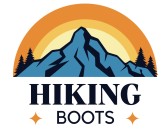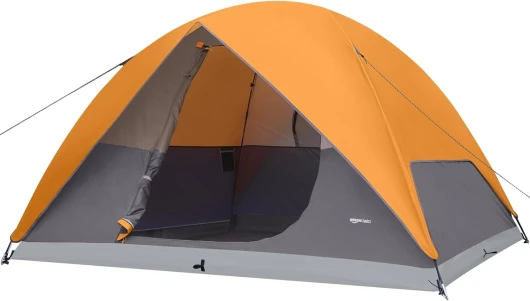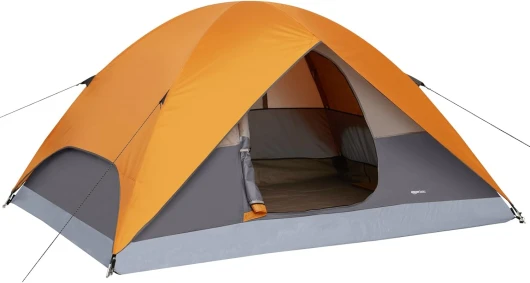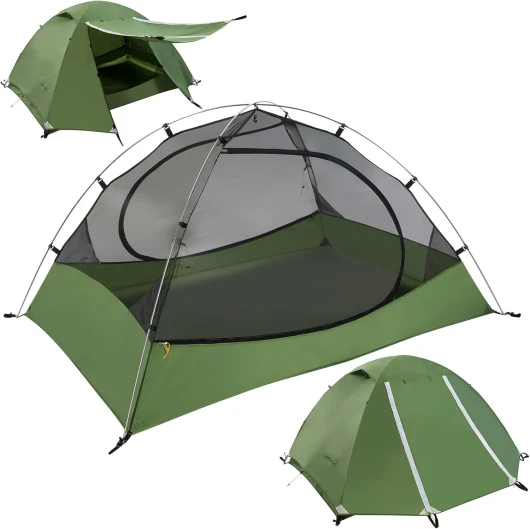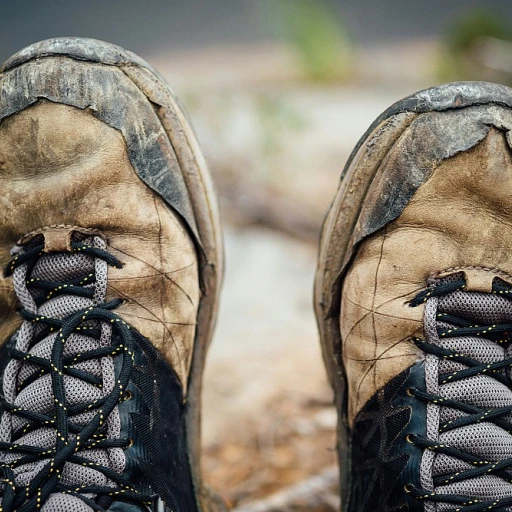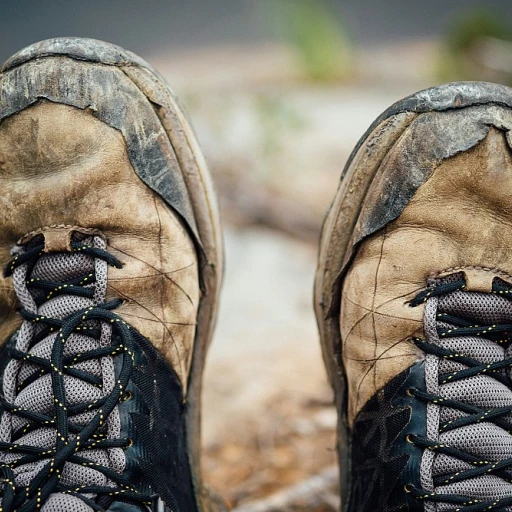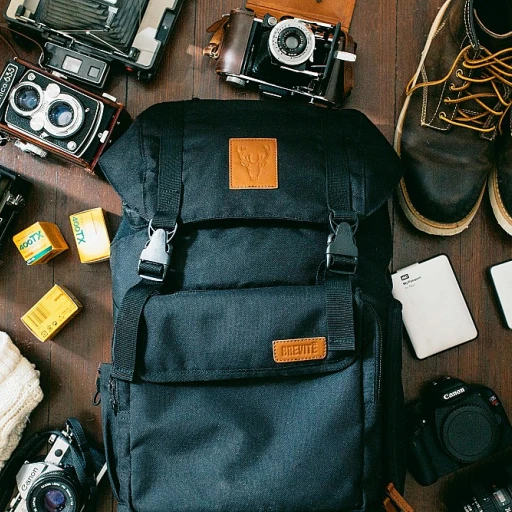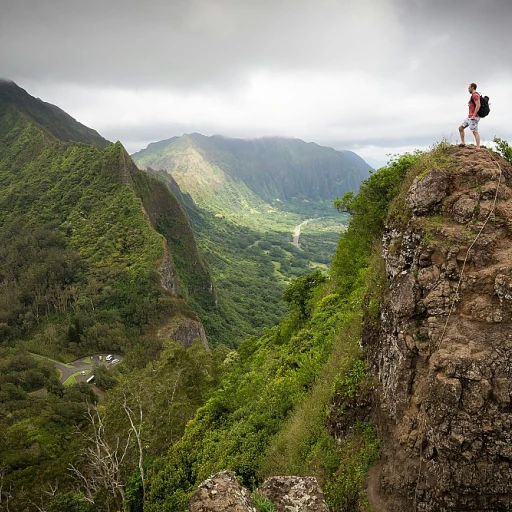
Understanding the Terrain
Analyzing the Trail’s Character
When preparing for a long trail, understanding the terrain isn’t just a suggestion, it’s a crucial element to ensure your gear list is tailored to the demands you’ll face. Whether you're heading to the Appalachian Trail or the Pacific Crest, getting familiar with the terrain will guide your choices in hiking boots and other essential hiking gear. Each trail has its own unique challenges and conditions. The Appalachian Trail is notorious for its diverse and rugged terrain, which can change dramatically from one section to the next. This calls attention to the need for hiking shoes that have excellent grip, appropriate weight for long treks, and superior support to prevent fatigue over multi-day hikes. Similarly, checking the elevation changes and terrain types will influence other items on your gear list, like the need for trekking poles or a lighter sleeping bag for high altitude hikes. The terrain will also determine your requirements for other essentials like water treatment options, based on the availability (or lack thereof) of clean water sources. Equipping yourself with a bear canister might be necessary in certain regions, unlike areas where food can simply be hung up. Meanwhile, an understanding of the terrain's flora might impact your decisions as well, dictating choices like a sleeping pad from Thermarest or Big Agnes versus a more insulated sleeping setup. Ultimately, knowing the trail's personality will let you craft a gear list that brings safety and comfort, allowing you to enjoy the vast wilderness the long trail offers. For a deeper understanding of what to pack specifically for the Appalachian adventures, check out this essential gear for tackling the Appalachian Trail.Material Matters
Choosing the Right Materials for Your Hiking Boots
When preparing for a long trail, the materials of your hiking boots play a crucial role in your overall experience. The right choice can mean the difference between a comfortable hike and a challenging ordeal. Here’s what you need to consider:
- Leather vs. Synthetic: Leather boots are known for their durability and water resistance, making them ideal for rugged terrains and long-distance hikes. However, they can be heavier. Synthetic materials, on the other hand, offer a lighter weight and quicker break-in time, which can be beneficial for shorter hikes or day trips.
- Waterproofing: Consider the weather conditions and the type of trails you’ll be tackling. Waterproof materials like Gore-Tex can keep your feet dry during wet conditions, but they might not be as breathable as non-waterproof options. Balancing water resistance with breathability is key, especially on trails like the Pacific Crest or Appalachian Trail.
- Breathability: For hikes in warmer climates, breathable materials are essential to prevent overheating and blisters. Look for boots with mesh panels or moisture-wicking liners to keep your feet comfortable.
For more insights on selecting the best materials for your hiking boots, check out our comprehensive guide on backpacking essentials.
Remember, the right materials not only enhance comfort but also contribute to the longevity of your boots, ensuring they remain a reliable part of your gear list for years to come.
Fit and Comfort
The Right Fit for Your Hiking Footwear
When setting out on a hike, especially on a demanding trail like the Pacific Crest or Appalachian Trail, the importance of the right fit cannot be understated. A well-fitting pair of hiking shoes can be the difference between a joyful journey and a painful ordeal. With the right amount of preparation and understanding, hikers can avoid discomfort and potential injuries. To begin, always start with trying on hiking boots when your feet are at their largest – usually at the end of the day or after physical activity. This accounts for the natural swelling that occurs during a long hike. It's also wise to wear the same socks you plan to use on your trail – consider choosing high-quality options like Darn Tough socks for optimal comfort and support. The fit should be snug everywhere but not tight. Your heels should be secure, and your toes should have some wiggle room. A thumb's width of space between your longest toe and the end of the shoe is ideal. Test the fit by walking on an incline or a set of stairs to ensure your foot doesn't slide forward. Remember, little details in fit can make a significant difference over long distances. In the world of gear lists, the importance of tailoring your selection extends beyond boots. Reflecting on factors like pack weight, a lightweight sleeping pad from brands like Therm-a-Rest or Big Agnes' Tiger Wall tent can improve your comfort further. When carrying essential gear such as water treatment systems or a bear canister, ensure the boots are supportive enough to handle the added pack weight without compromising your footing. For women's hiking boots, companies have realized that women's feet are not merely smaller versions of men's, leading to a wider variety of tailored options. Finally, if you're venturing for more than a day or a year into long-distance trails, insightful articles exploring the best trails for waterfall adventures can serve as valuable resources for embarking on your next trek.Weather Considerations
Adapting to Weather Changes on the Trail
When embarking on a long trail adventure, understanding how weather impacts your hiking experience is crucial. Weather conditions can change rapidly, especially on trails like the Pacific Crest or the Appalachian Trail. Your choice of hiking boots should reflect the climate and terrain you expect to encounter.
Consider these factors when selecting your boots:
- Waterproofing: If you're hiking in areas prone to rain or crossing streams, waterproof boots are essential. They help keep your feet dry, reducing the risk of blisters and discomfort. Look for boots with Gore-Tex or similar waterproof membranes.
- Breathability: In warmer climates, breathability is key. Boots with mesh panels or moisture-wicking liners can prevent overheating and excessive sweating, keeping your feet comfortable throughout the day.
- Insulation: For colder environments, insulated boots provide warmth. Consider the time of year and elevation changes on your trail to determine the level of insulation needed.
Pairing your boots with the right socks is equally important. Brands like Darn Tough offer durable, moisture-wicking options that complement your footwear, enhancing comfort and performance.
Additionally, your overall gear list should include weather-appropriate clothing. A reliable jacket, such as those from Black Diamond, can protect you from wind and rain, while a sleeping bag from Big Agnes or a sleeping pad from Therm-a-Rest ensures a restful night, regardless of the conditions.
Remember, the weight of your gear matters. Lighter boots can reduce fatigue on long hikes, but ensure they still provide the necessary support and protection. Balancing weight and functionality is key to a successful trek.
Durability and Maintenance
Maintaining Your Boots for Long-lasting Durability
Ensuring your hiking boots stand the test of time, especially when tackling the Appalachian Trail or the Pacific Crest Trail, involves understanding durability and proper maintenance. Here are some tried and true tips to preserve your footwear's performance and longevity:- Understand the Material: Understanding the materials of your shoes, whether it's full-grain leather or modern synthetics, helps in selecting the right cleaning and maintenance products. Each material has specific care requirements, which are crucial for keeping your trail gear in its prime condition.
- Regular Cleaning: After every hike, whether it's a short day on the trail or a long expedition involving your sleeping bag and bear canister, take the time to clean your boots. Remove dirt, mud, and grit with a soft brush or damp cloth. This prevents abrasion which can degrade the materials over time.
- Waterproofing and Treatment: Even if your boots are marketed as waterproof, it's beneficial to treat them with a water repellent every few months, especially if you're planning to trek in rainy or snowy conditions. Regular waterproofing treatments ensure your shoes remain water-resistant and ready for the elements.
- Proper Drying Techniques: After cleaning, let your boots dry naturally away from direct heat. Stuffing them with a little dry newspaper can help absorb moisture without compromising the integrity of the material. This is crucial for maintaining the shape and fit, which is vital for comfort during long-distance hikes.
- Inspection for Wear and Tear: Regularly inspect your boots for signs of wear. Pay particular attention to the soles and seams as these areas often endure the most stress. Replacing a worn sole can extend the life of your favorite boots, and it's a cost-effective way to maintain your gear list without replacing the entire shoe.
Innovations in Hiking Boot Technology
Revolutionary Features Transforming Your Hiking Experience
In the ever-evolving landscape of trail gear, hiking boots have seen remarkable advancements, enhancing the hiking experience for seasoned trekkers and mountaineers. Whether you're embarking on a journey along the Pacific Crest or preparing for a long-distance adventure like the Appalachian Trail, understanding these innovations can greatly impact your overall comfort and safety.
- Advanced Materials: The use of futuristic fabrics in hiking boots helps in reducing weight without sacrificing durability. Lightweight materials offer comfort while you're out on the long trail, ensuring that each step feels less burdensome.
- Superior Traction: Cutting-edge tread patterns and rubber compounds provide a grip that is unparalleled, ideal for tricky terrains and conditions. This includes icy paths or muddy tracks that could be encountered on a multi-day hike.
- Breathable and Waterproof Technologies: No longer do hikers have to choose between breathability and waterproofing. Modern technology in boot linings can keep your feet dry from external water while allowing moisture evaporation, a valuable feature when transitioning from a fiery day to a cool evening.
- Customizable Fit Systems: Innovations like adjustable collar heights and integrated lacing systems offer tailored fitting options. This ensures that whether you're wearing thicker socks or no socks at all, your boots fit snugly.
- Temperature Regulation: Some hiking boots incorporate thermoelectric systems to adapt to varying weather conditions, an advantage when you're switching between environments or altitudes along the trail.
- Eco-Friendly Manufacturing: As environmental consciousness grows within the hiking community, many boot manufacturers have begun employing sustainable materials and ethical production methods, ensuring that even your footwear aligns with an eco-friendly ethos.
As each gear component plays a vital role, staying informed about the latest technological enhancements can elevate your hiking adventures by providing comfort, safeguarding your health, and possibly even lightening your pack. Investing in the right pair of hiking boots can make a world of difference on your long journey, ensuring that your year-round trekking adventures are both safe and enjoyable.
